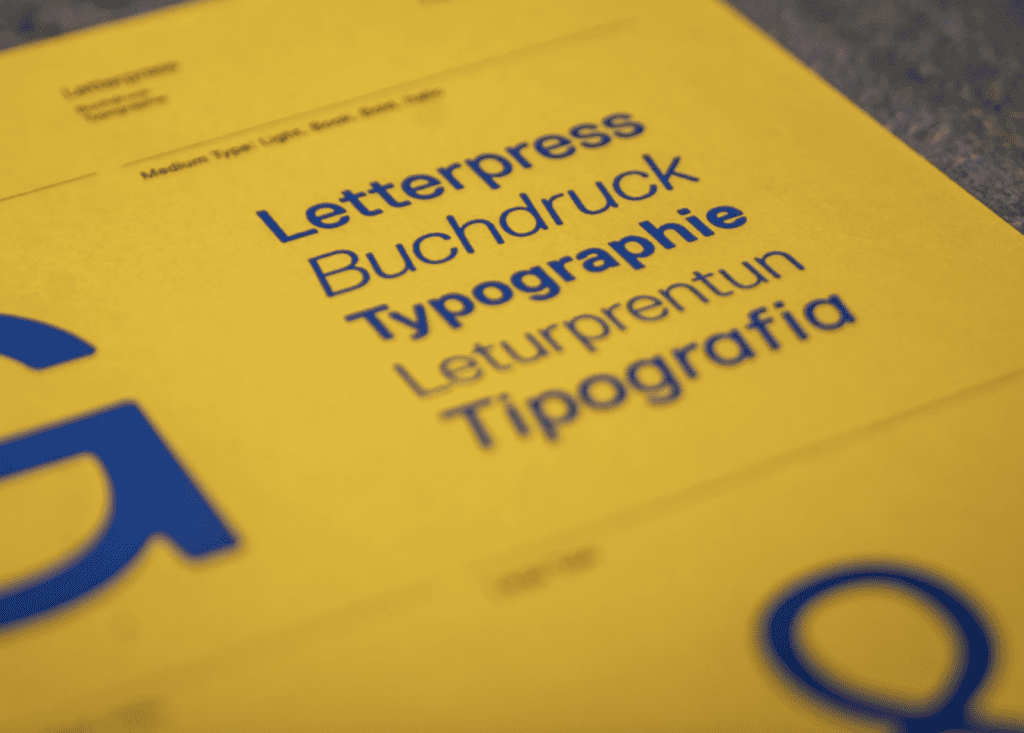Next time you are starting (or rebranding) a business or just firing up your computer to pick out your favorite typeface and font, beware. Your intended use might just land you in legal hot water. Although the U.S. Copyright Office and courts have generally held that copyright protection does not extend to typefaces and fonts, it is still possible to violate copyright law when you use them. And typefaces and fonts only get more complicated once you toss other types of intellectual property protection like patent and trademark, and state law considerations into the mix.
Whether your company is developing product packaging, creating a new business logo, or engaging in other commercial endeavors, your choice of typeface and font should not be left to chance since one misstep could be recipe for disaster.
Typefaces, Fonts & Intellectual Property Law
The words “typeface” and “font” are often used interchangeably, but it is important to note each word has its own distinct meaning for purposes of this discussion. A “typeface” is “a set of letters, numbers, or other characters with repeating design elements.” For example, “Baquet Script” is a typeface. On the other hand, a “font” is a variation of a typeface, such as variations in size, weight, or style of the typeface (e.g., bold, italics). In the days of printing presses, a font would be the stylistic appearance of the typeface on the metal press. With the advent of computers, it is now software code that delivers the stylized typeface or “font” to our computer screens.
The use of typefaces and fonts implicates copyright, trademark, and patent protections – and these laws can often be unforgiving, with violations potentially resulting in strict liability, statutory damages, and in some cases, treble damages. Therefore, each area of IP law should be carefully evaluated before using typefaces or fonts for any commercial purpose.
Copyright Law – Typefaces and fonts may not be considered protectable under copyright law, but computer code is. This means anytime you use computer code to direct the stylization of the typeface and generate the font, the computer code is potentially subject to copyright protections. Most word processors and computer software have an end user license agreement (“EULA”), which dictates the limited, permitted uses of the copyrighted typeface and/or font code. Common limitations may include certain commercial uses, which can create unanticipated issues for businesses using the software on a day-to-day basis.
Keep in mind these copyright considerations usually come into play when the typeface and font are generated by the copyrighted computer code. If there are no other prevailing restrictions contained in the applicable EULA or other agreements (e.g., limitations on reverse engineering, etc.), copyright law may not preclude you from creating and displaying the same or similar typeface or font generated by external means, although other applications or federal and state law may come into play.
Trademark & Patent Law – Before you start creating imitations of your favorite typefaces, consider there are more than just copyright considerations at hand. Trademark law can also extend protections to typefaces incorporated into a trademarked logo. For example, Disney’s famous and distinctive typeface is incorporated into many of its registered trademarks. If a competitor were to use the same typeface in one of Disney’s many lines of business, the potential for a trademark infringement claim arises.
In addition, typeface and font designs are eligible for design patents. Many computer system providers will offer their own unique typeface and font designs that are subject to this additional intellectual property protection. This type of patent protection lasts for 15 years before the typeface or font will enter the public domain.
Preparation Is Key
Before you start development on your next big company project, prep work is key. Evaluate typeface and font considerations up front, and you might avoid big legal issues later.
Review Software EULAs – Obtain legal review of the applicable EULA before using software-supplied typefaces and fonts, particularly if your intended use is commercial. It’s not uncommon for standard software packages to be limited to home, educational, or other noncommercial purposes. For example, using a word processor program to design a business logo could be a copyright violation if the EULA does not authorize such commercial use or use as a trademarked logo.
Note that in some cases, a “business” version of the software may be available for extra cost, which could offer greater use permissions. But even with a commercial level license, there could be other potential legal or scope restrictions in the EULA that may impact your business. This could include limitations on the length of the license term or restrictions on assignment of the EULA to another party.
Consider Hiring Out – Consider hiring a third party to design a unique typeface for your company’s business needs, particularly for logos, product packaging, and other public facing projects. This avoids unanticipated restrictions or limitations on your company’s use of the typeface and font in the future and offers greater flexibility.
While a customized typeface might be a safer bet, there are still potential legal risks to consider — particularly with respect to intellectual property ownership rights. Ensure your designer’s work is original and qualifies as work for hire and/or all right, title, and interest to such typeface is properly assigned to your company’s ownership. Also make sure your contractual arrangement provides adequate intellectual property indemnification and representations that the custom typeface does not violate any third-party intellectual property rights, such as a design patent covering the font or typeface.
Karl Zielaznicki is a partner in the Troutman Pepper’s Health Sciences Intellectual Property Practice Group, which specializes in trademark counseling, intellectual property agreements, and transactional intellectual property law matters.
Victoria Summerfield is an associate at Troutman Pepper, where the core focus of practice is trademark prosecution, counseling, and transactions.











